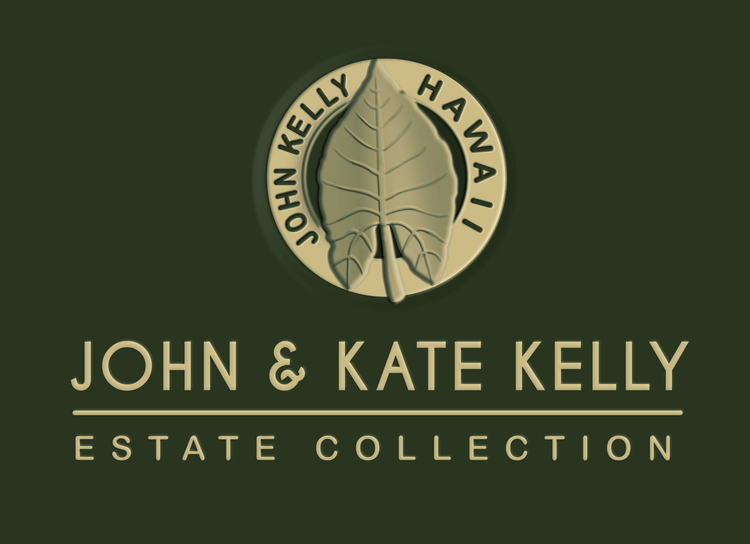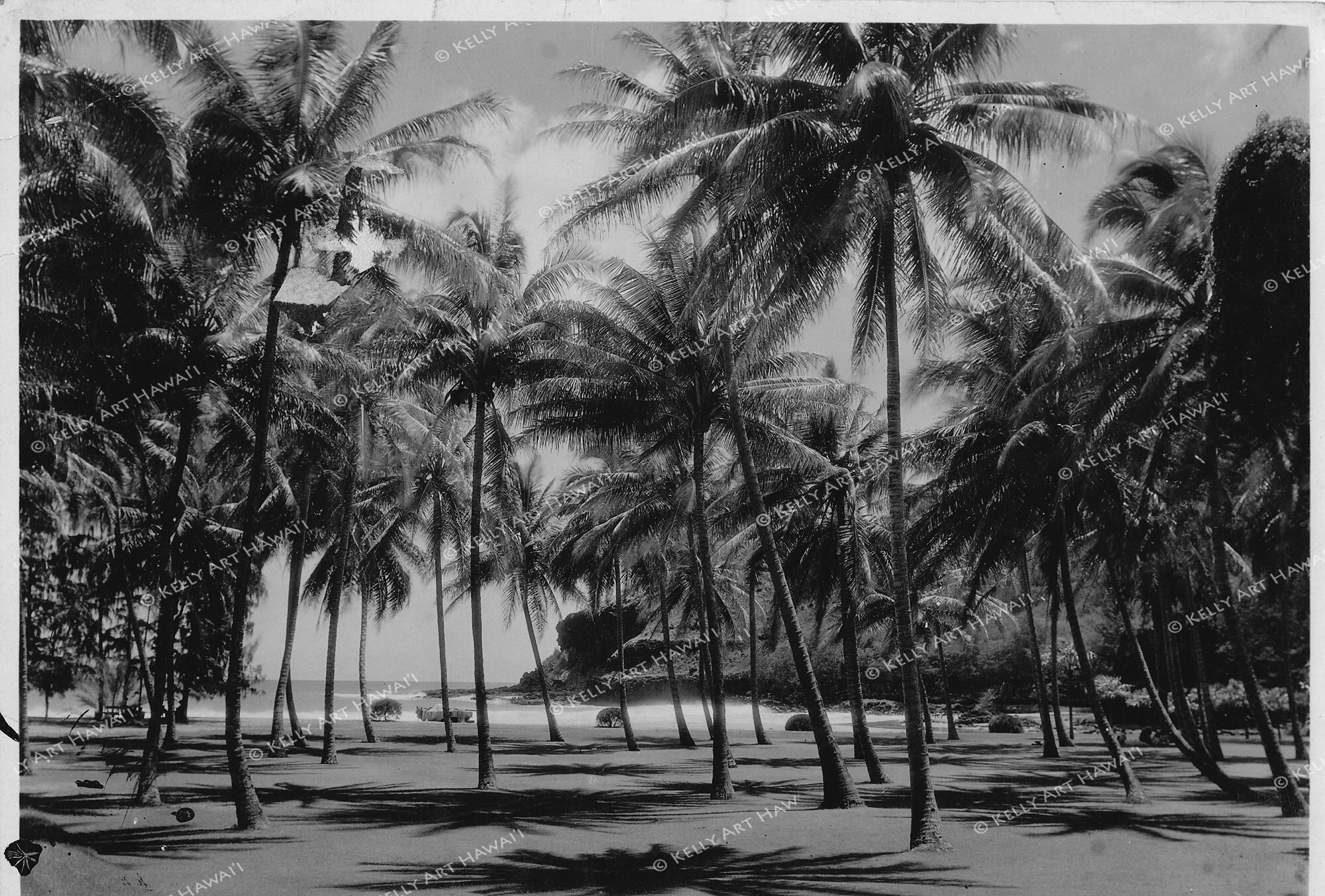
This image was taken on Kauai and used by John to produce the etching, “Kauai Coconuts.”
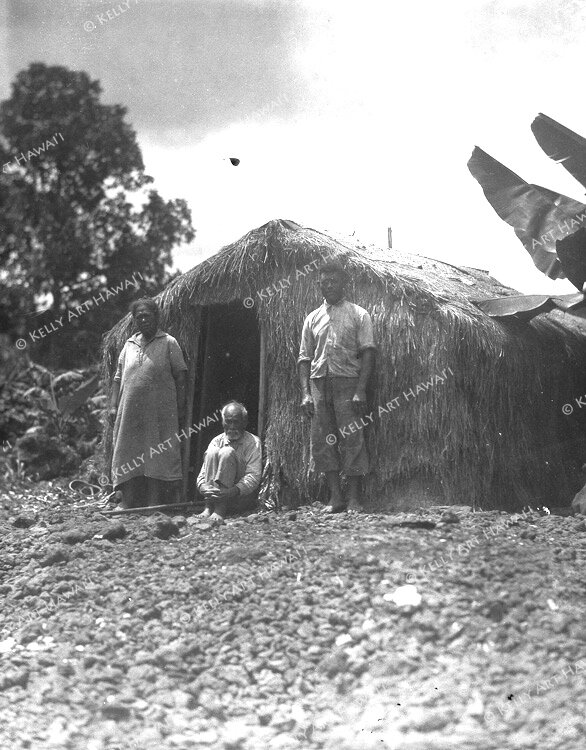
This photo is of Old Kalama (also an etching by the same name). He was a practitioner of Laʻau Lapaʻau.
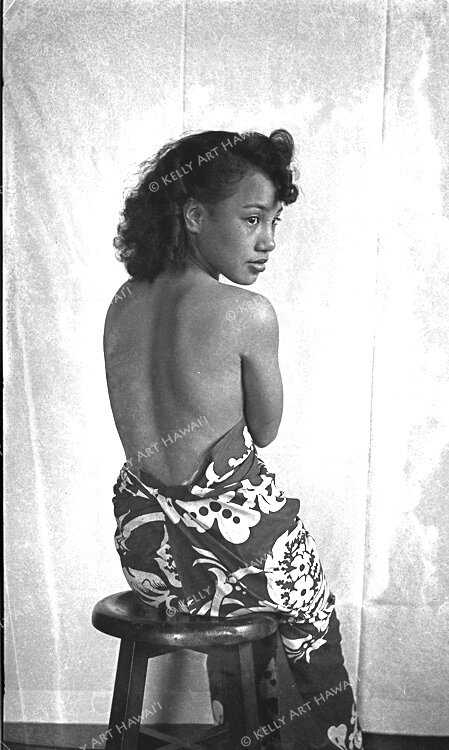
This model was used to create the famous image, “Hawaiian Decoration,” which was the featured image in Hawaiian Idyll, an exhibit at the Honolulu Academy of Art (Museum).
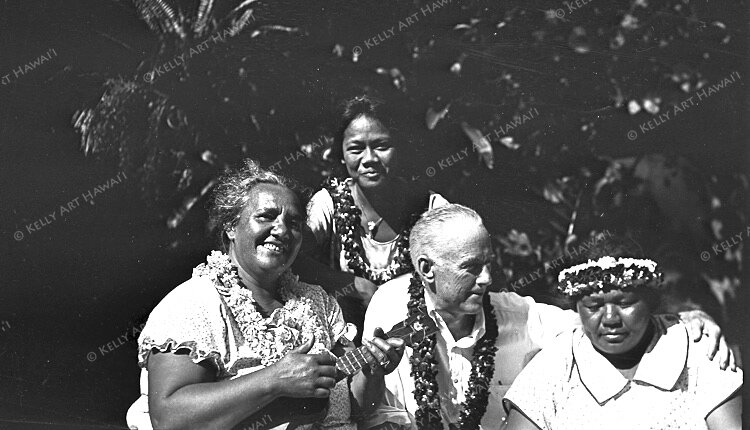
John seen here with friends during one of the frequent gatherings of friends at their home.
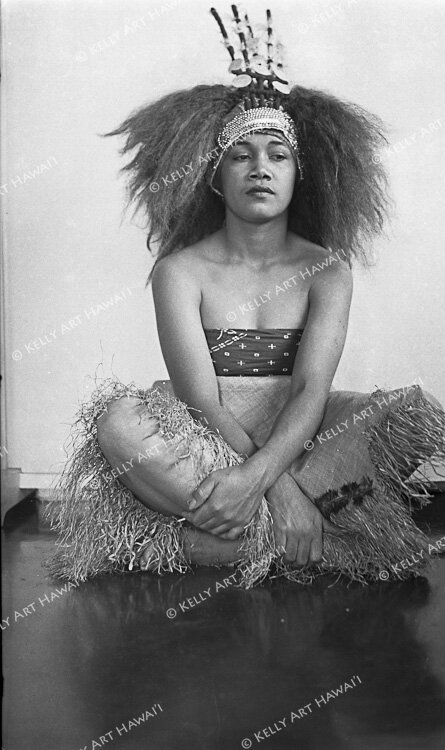
This model posed in Johnʻs studio.

John and Kate often held painas (gatherings) where music and food were a key feature.
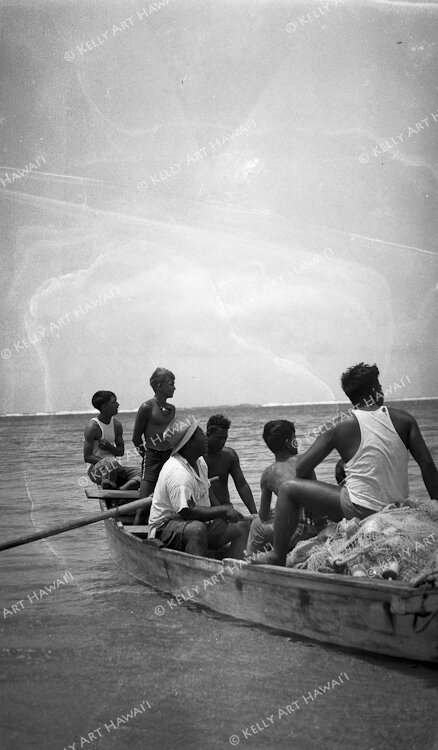
Friends in their boat as they are leaving for a day of fishing.
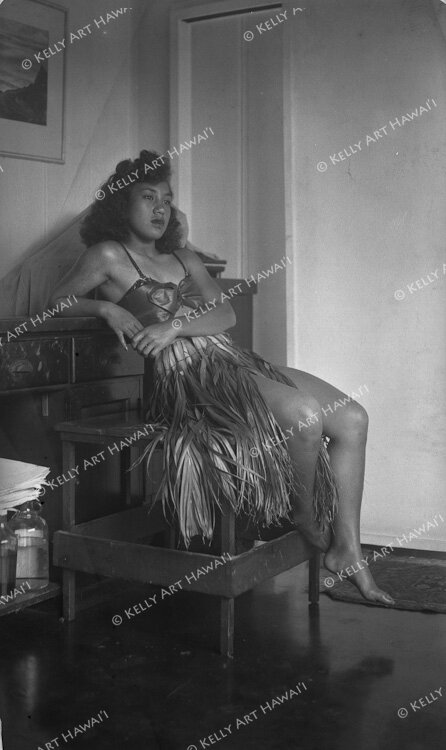
This model provided the image for the aquatint print entitled, “Hula Dancer.” She is seen here resting.
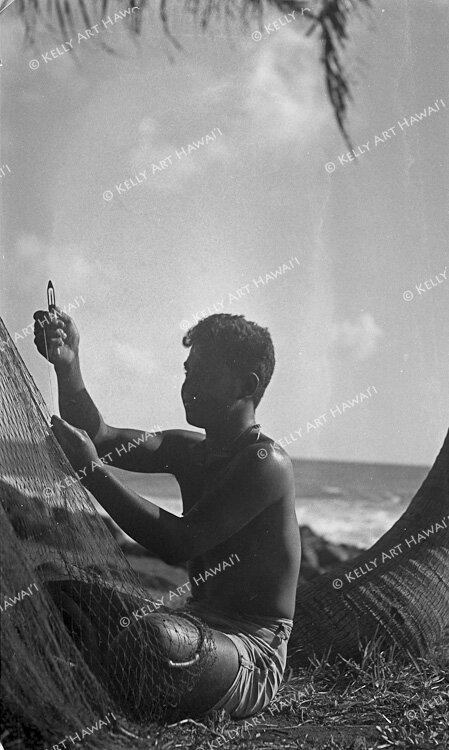
This photo of a fishermen repairing his net was used to create dry point etching by the same name.
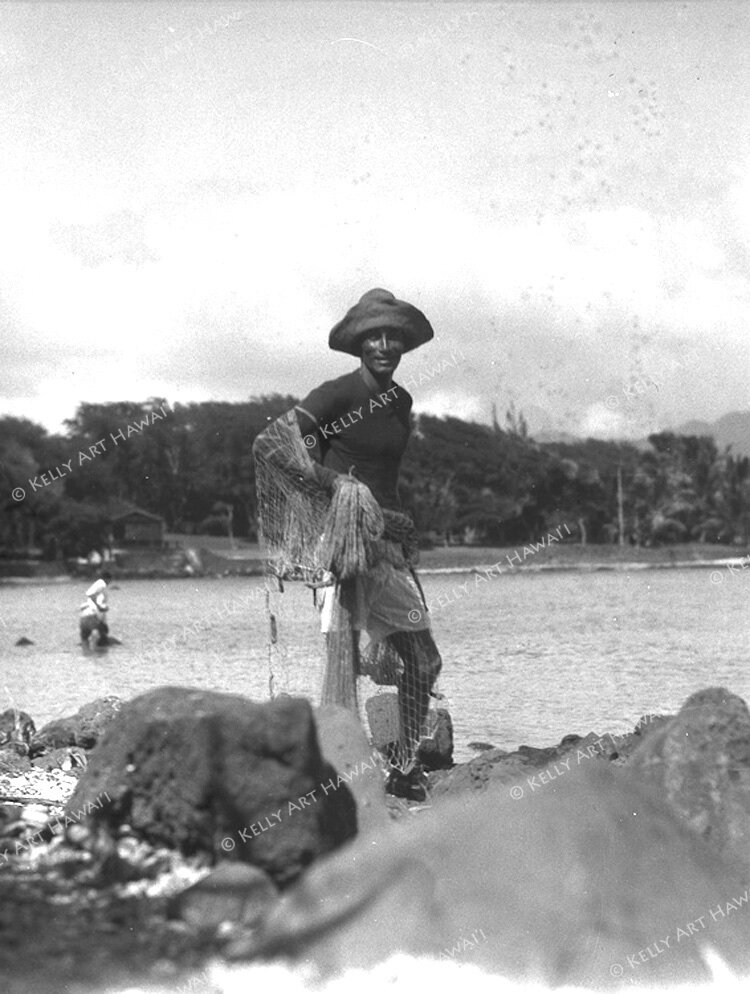
This image of a fisherman became a dry point etching.
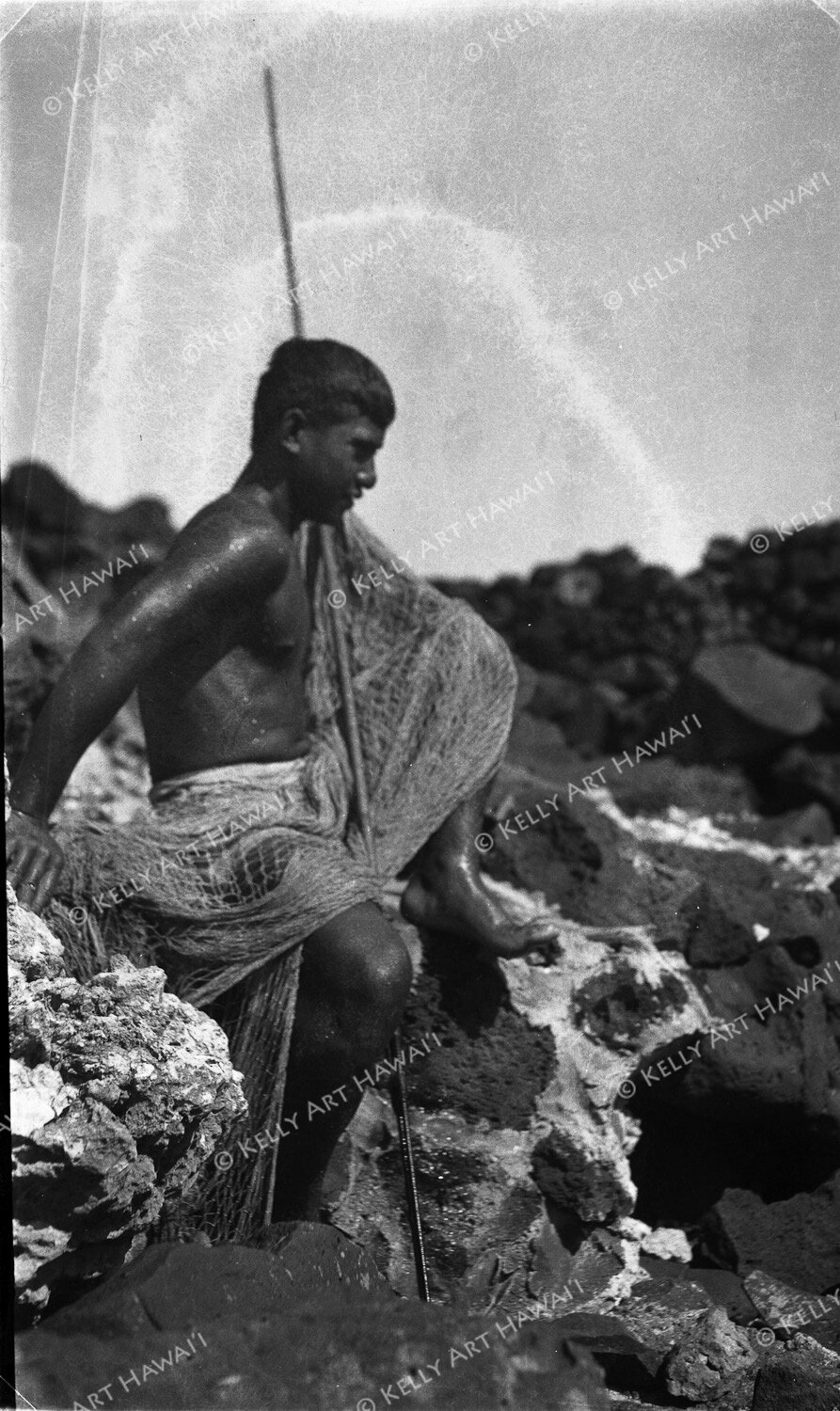
Fisherman returning from fishing with a throw net.
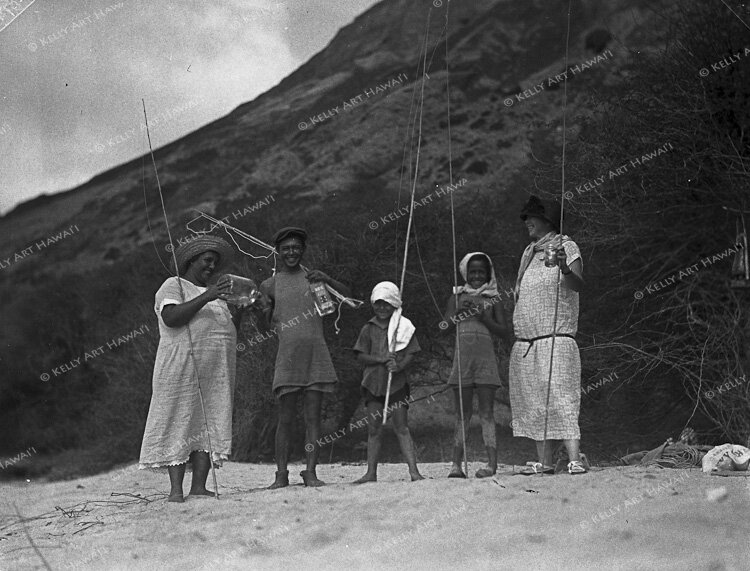
Women and children fishing from shore near Diamond Head.
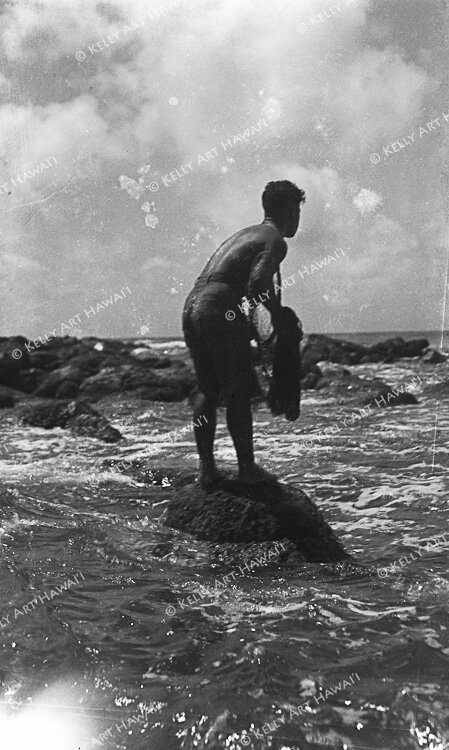
This model was used to create the color aquatint , “Throw Net Fisherman.”
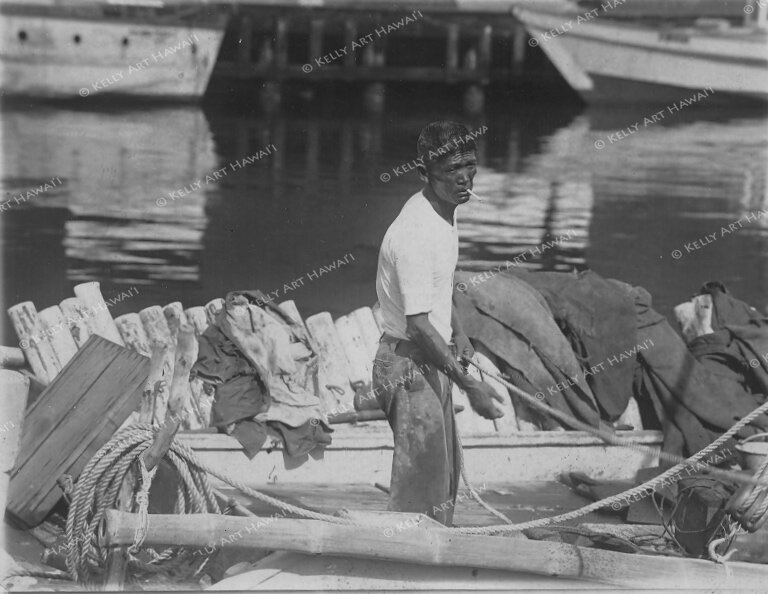
This photo served a model for the drypoint etching “Sampan Fisherman.”
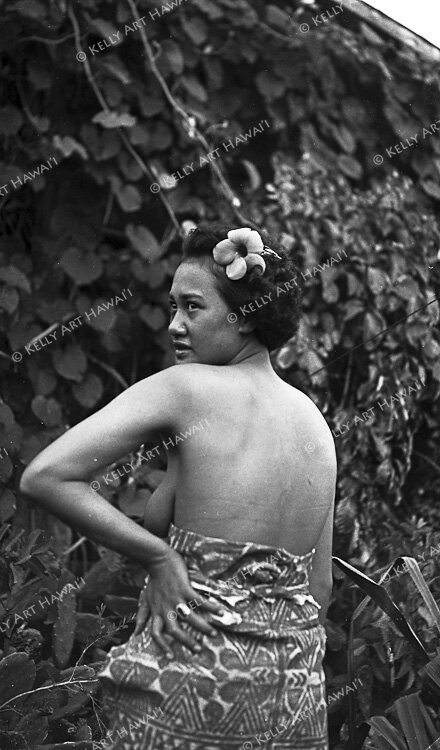

Photo of image used by John to create the etching, Ti Leaf, Hawaii.
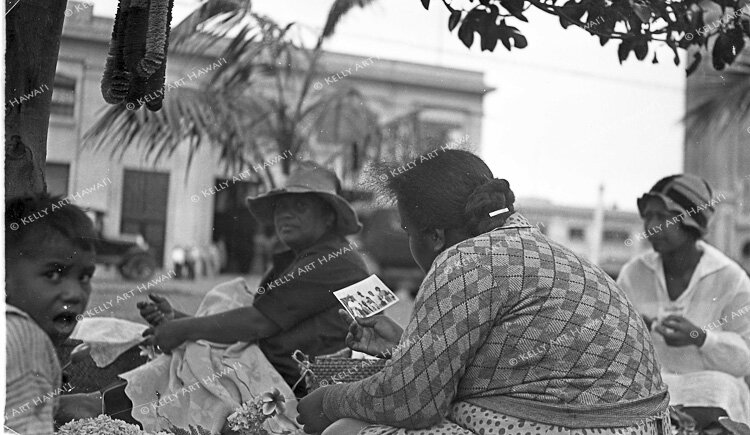
Lei makers seen reviewing photographs that Kate took of them working at Aloha Tower. John did a famous dry point etching entitled, “Lei Makers.”
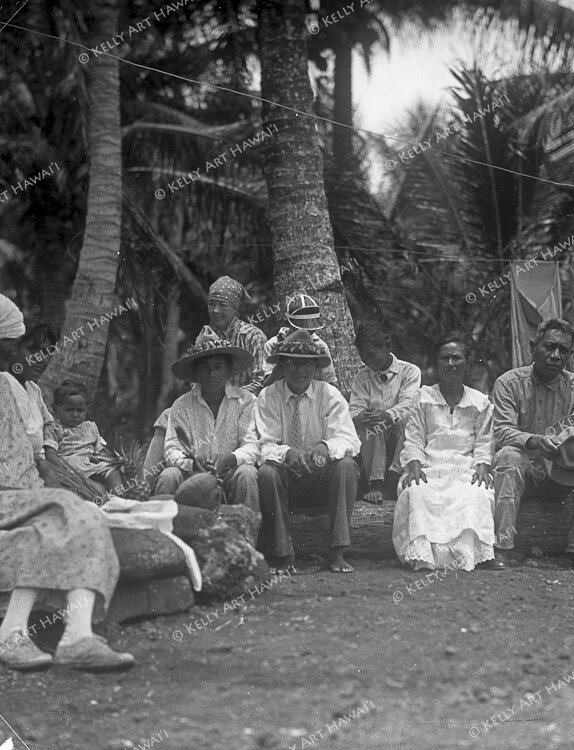
Hawaiian people gathered together. John and Kate were often invited into the homes of their friends and neighbors.
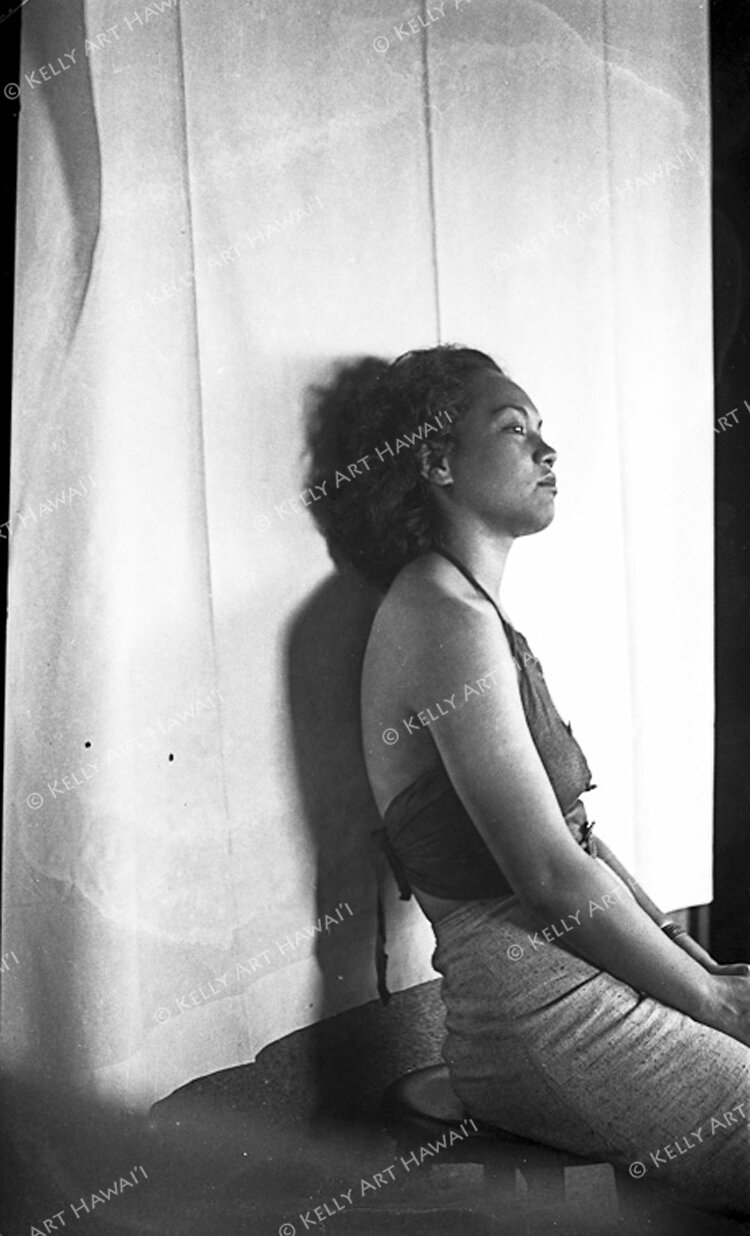
The photo was used to create the dry point etching “Mokihana.” She as a favorite model of Johnʻs.
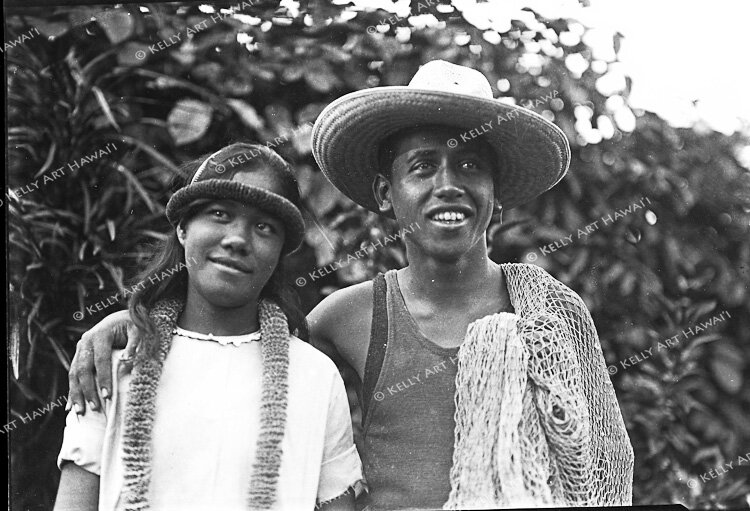
Kimo was a fisherman who posed for a now famous print by John Kelly. He is pictured here with a friend.
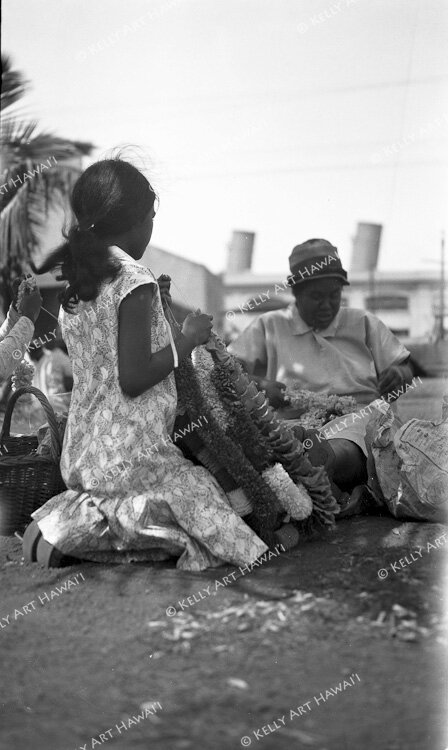
Women making lei for sale to the tourists arriving at Aloha Tower on passenger ships.
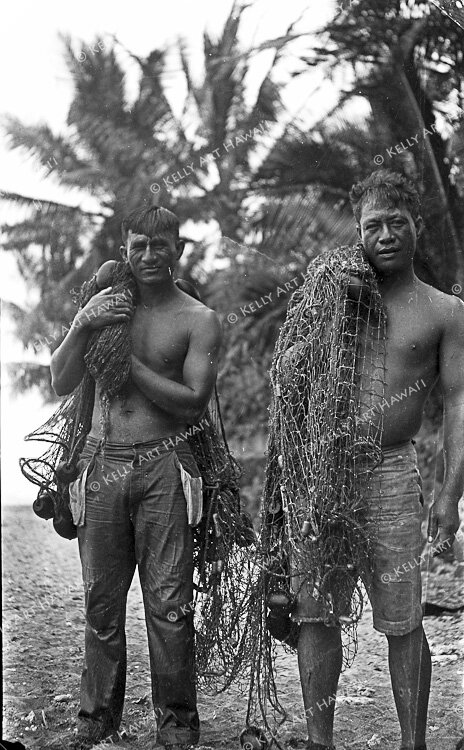
1932, Oahu Hawai’i
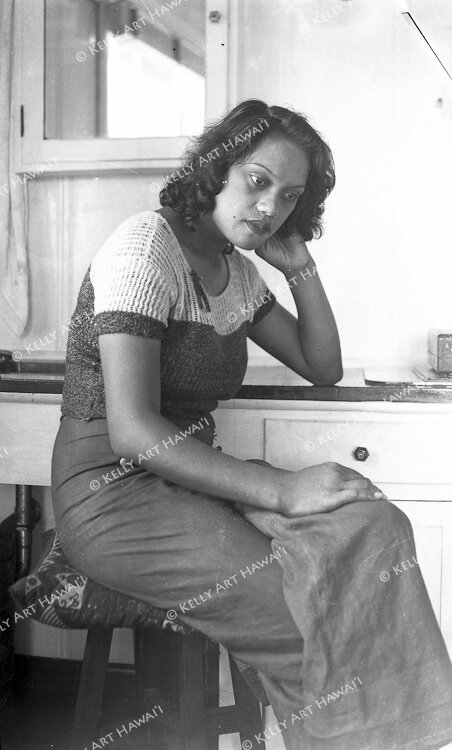
Nanea was a favorite model of Johnʻs. This image was used by John to create the drypoint by the same title.
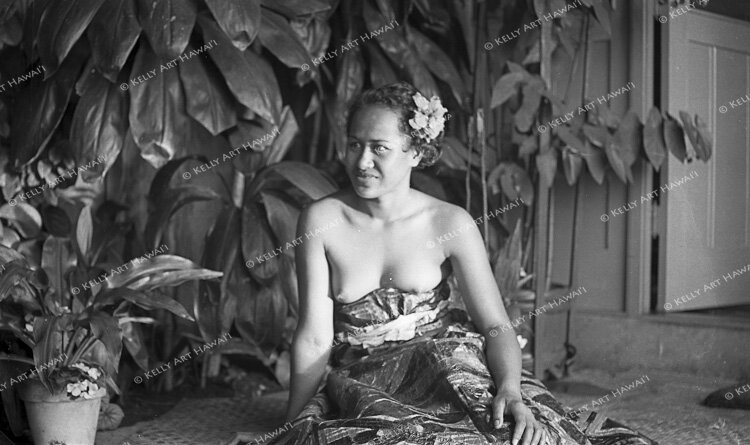
This model was a favorite of John Kelly. She is featured in several prints.
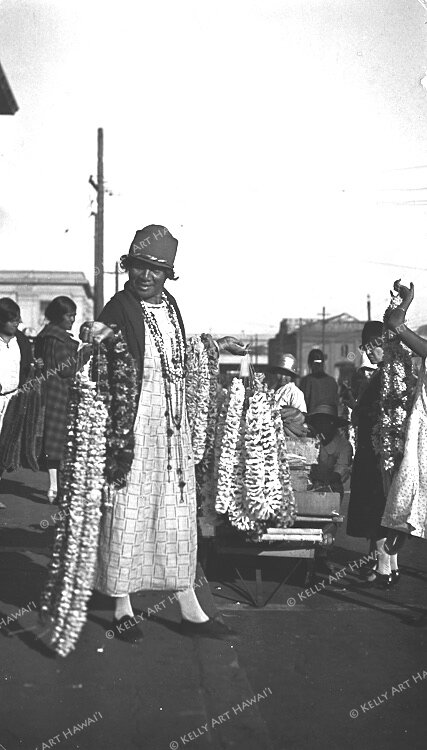
Hawaiian woman selling lei at Aloha Tower in Honolulu. Aloha Tower served as the port for the large passenger vessels.
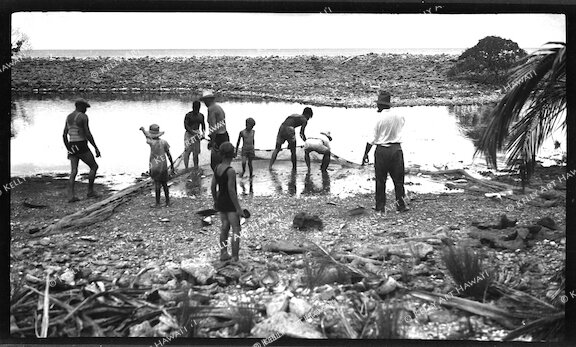


























This image was taken on Kauai and used by John to produce the etching, “Kauai Coconuts.”
This photo is of Old Kalama (also an etching by the same name). He was a practitioner of Laʻau Lapaʻau.
This model was used to create the famous image, “Hawaiian Decoration,” which was the featured image in Hawaiian Idyll, an exhibit at the Honolulu Academy of Art (Museum).
John seen here with friends during one of the frequent gatherings of friends at their home.
This model posed in Johnʻs studio.
John and Kate often held painas (gatherings) where music and food were a key feature.
Friends in their boat as they are leaving for a day of fishing.
This model provided the image for the aquatint print entitled, “Hula Dancer.” She is seen here resting.
This photo of a fishermen repairing his net was used to create dry point etching by the same name.
This image of a fisherman became a dry point etching.
Fisherman returning from fishing with a throw net.
Women and children fishing from shore near Diamond Head.
This model was used to create the color aquatint , “Throw Net Fisherman.”
This photo served a model for the drypoint etching “Sampan Fisherman.”
Photo of image used by John to create the etching, Ti Leaf, Hawaii.
Lei makers seen reviewing photographs that Kate took of them working at Aloha Tower. John did a famous dry point etching entitled, “Lei Makers.”
Hawaiian people gathered together. John and Kate were often invited into the homes of their friends and neighbors.
The photo was used to create the dry point etching “Mokihana.” She as a favorite model of Johnʻs.
Kimo was a fisherman who posed for a now famous print by John Kelly. He is pictured here with a friend.
Women making lei for sale to the tourists arriving at Aloha Tower on passenger ships.
1932, Oahu Hawai’i
Nanea was a favorite model of Johnʻs. This image was used by John to create the drypoint by the same title.
This model was a favorite of John Kelly. She is featured in several prints.
Hawaiian woman selling lei at Aloha Tower in Honolulu. Aloha Tower served as the port for the large passenger vessels.
